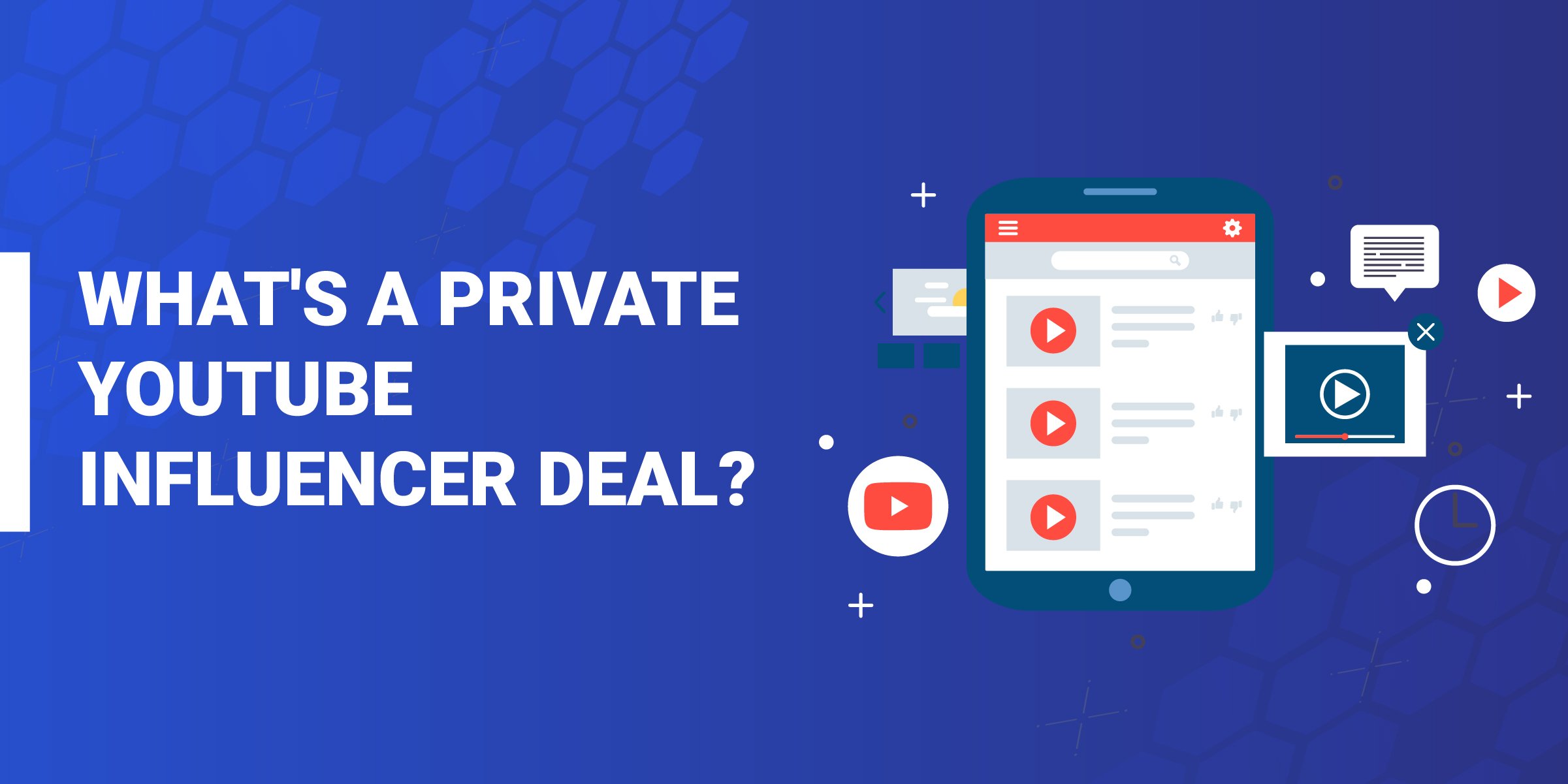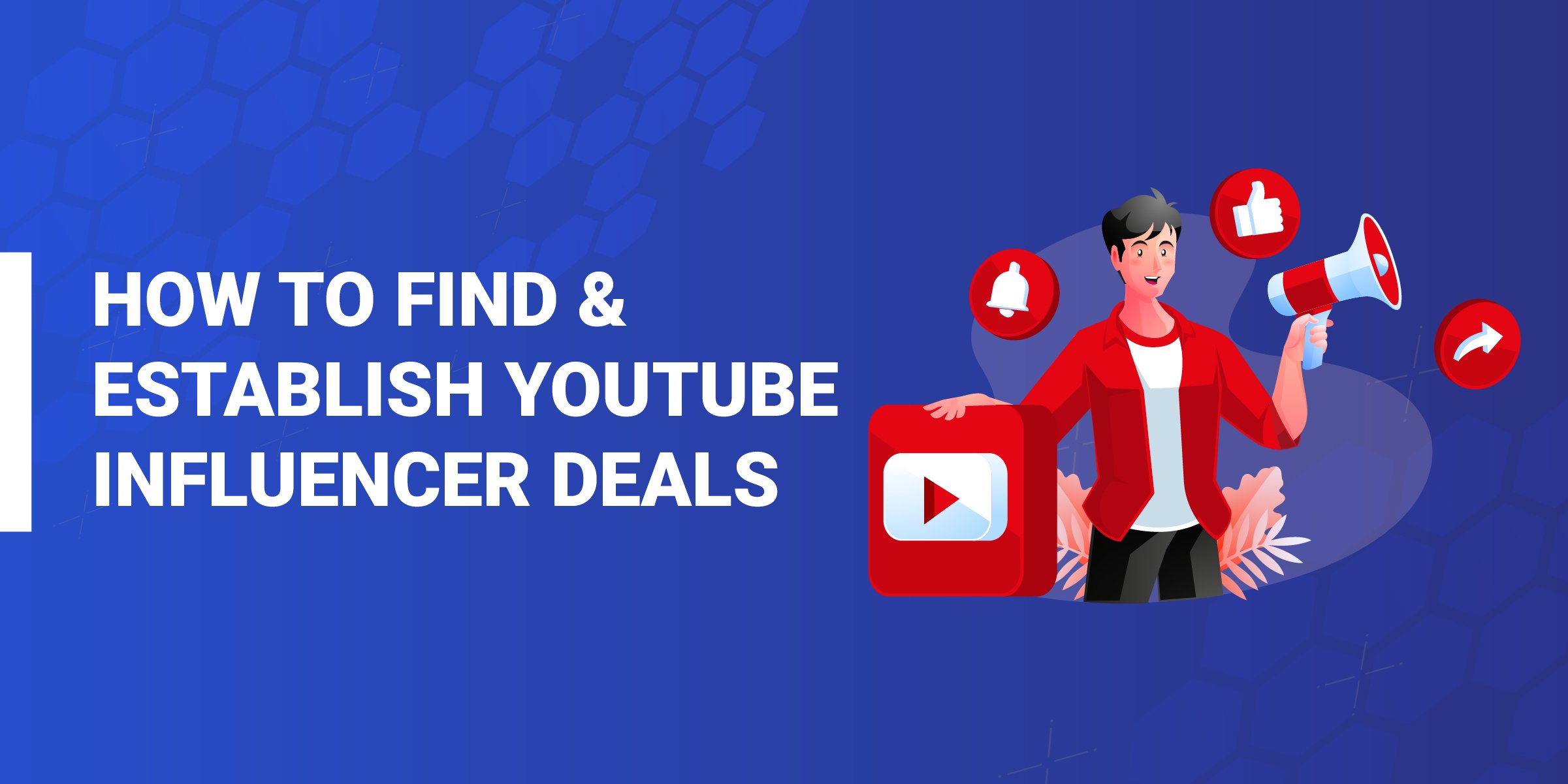Want a new, high-converting traffic source? I’ve personally found private YouTube deals are the way to go.
If done right, YouTube sponsorships can cost a fraction of paid ads.
And for me, this traffic converts at a crazy, 9.6 times the rate of my organic search traffic.
I’ve created a simple process to find YouTube influencers of any size and establish sponsorship deals. And today I’m gonna share the secret sauce including…
- My email outreach template
- How to negotiate a fair sponsorship rate
- Instructions for the video format
- How to track results
We offer this website completely free to our visitors. To help pay the bills, we’ll often (but not always) set up affiliate relationships with the top providers after selecting our favorites. However, we do our best not to let this impact our choices. There are plenty of high-paying companies we’ve turned down because we didn’t like their product.
An added benefit of our relationships is that we always try to negotiate exclusive discounts for our visitors.
DiggityMarketing chose my strategy as a finalist in their Best Affiliate Marketing Strategy contest.
Let’s take a look at the specific steps to get a sponsorship going, but first…
What's a Private YouTube Influencer Deal?


To drive targeted traffic to your site, you can establish a private deal with YouTubers to promote your product or brand within their videos. You’ll set up a private influencer deal between you and the creator made outside of the YouTube platform (i.e. not YouTube ads).
A private deal is like a commercial. I’ve seen it done 3 main ways (but there are likely more):
- Product Placement: The YouTuber uses your product somewhere in their video in an obvious way
- Sponsored Mentions: The YouTuber describes your product in a 30-90 second advertorial using their own words during one of their videos (my preferred method)
- Dedicated Video: The YouTuber produces an entire, dedicated infomercial-style video for your product
You can find these deals using influencer marketing agencies, but I prefer to set them up myself and cut out the middle man to save money.
Why Are Private Deals So Good?
- Higher conversion rate – Warm referrals to your website from trusted influencers convert significantly higher than cold organic or PPC traffic.
- Cheaper than ads – Most YouTubers are not accustomed to being offered deals and will work with you at affordable prices.
- Easy outreach – YouTubers are rarely approached and are much more likely to respond to cold outreach than a typical blogger. Plus, they are used to talking on camera and are generally easier to get on a phone call.
- Ongoing traffic – Unlike paid ads, videos will continue to generate traffic over time. In fact, it’s extremely difficult for a YouTuber to edit a video and remove your sponsorship even if they wanted to.
- Meet people in your niche – I’ve personally made lasting connections with the YouTubers I’ve met through this process.
This is a great way to connect with people in your niche. I've made industry friends and advisors, hired writers and subject matter experts for press inquiries, and I even hired on YouTuber to produce videos for my own YouTube channel.
What Types of Websites Are YouTube Sponsorships Good For?
If you sell your own product, sponsorships can work very well. Ecom stores and digital products are no-brainers for leveraging video creators.
I’ve found this strategy works for affiliate sites too, but only if you’re providing added value. It’s hard to convince a YouTuber to promote someone else’s affiliate product review. Especially if you promote affiliate an affiliate program that the YouTuber could easily join themselves.
Does your affiliate site have a unique angle that adds value?
Examples of Affiliate Sites to Pitch for Sponsorships:
- Doesn't work: 5 best home office video cameras
- Works: Amateur guide to setting up your home office [+ our favorite video equipment bundle]
- Doesn't work: Review of the best dog food
- Works: Custom meal plans for dogs with different health issues
- Doesn't work: Find a roofer near me
- Works: Roofing Calculator: Estimate roof replacement cost for your specific home
How to Find and Establish YouTube Influencer Deals


1 – Create a Target List of YouTube Channels
The first step is to make a shortlist of target channels that have enough volume to make the sponsorship worthwhile. I personally want a minimum of 5k views per video, but more on that below.
Enter your desired topic into YouTube Search and review the results. If you find a channel that looks interesting, make a note of it. When you click on a video you can also review the Watch Next videos that appear next to it.
Repeat for similar topics in your niche. There’s no magic to this first step, just poke around YouTube to get a starting list of 10-20 channels.
YouTube Channel Screening
- Skip any corporate channels as they will be harder to reach and negotiate with.
- Click on the Channel Name and then go to Videos tab.
- Sort by Most popular and make a note of the highest views for a video on this channel.
- Sort by Date added (newest) and do a rough mental estimate of the average views across a couple dozen videos.
- Determine your minimum and maximum range for channel views.
- Minimum: I personally shoot for a minimum of 5k views/video on average. Less than that is not worth the hassle. My sweet spot is 25-40k views/video.
- Maximum: For my budget, I personally target <50k views/video on average. More than that can be too risky and expensive if the video doesn’t convert for you.
- Watch a video or two and see if the channel is a good fit for your brand (Don’t Skip This Step!)
You can start outreach with as little as 5-10 channels since the response rate is so good. My response rate to cold emails has been a shockingly high 58%. Compare that to typical link-building outreach to bloggers where you are lucky if you get a 1-2% response rate!
Find the influencer’s contact info
A contact email is surprisingly easy to find on YouTube. Just go to the About tab on a channel and many will have a contact email listed.


If no contact is listed, you can also go to the YouTuber’s website and look for a Contact page. Or you can find other social channels like Twitter or Facebook to send them a direct message.
2 – Reach Out to Your Prospects


Initial Email
I like to send a teaser email to the YouTuber with the goal of setting up a call to generate interest and close a deal.
I try to keep the email short and sweet and not bring up rates. Don’t give them a reason to say no just yet. It’s much easier to get them excited and then negotiate rates on a call.
Below is a sample template that you can tweak for your own website.
Subject: Tom-Interested in a paid YouTube sponsor?
Hi Tom,
Would you be interested in collaborating on a paid sponsorship for one or more of your videos?
I’m looking to work with reputable YouTube channels like Virtual Assistant Tips to describe my website in your own words during a video.
I’m the founder of Don’t Do It Yourself, where we provide advice and reviews of business tools and services. We’ve created a step-by-step hiring guide for Virtual Assistants to help business owners find the perfect VA.
Please let me know if we can jump on a call to discuss further. And don’t hesitate to reach out via email or phone with any questions.
Thanks for your consideration,
Geoff
800-555-5555
If you’ve already done a sponsorship with another channel, you can link to that as an example in your email.
After sending, I’ll note the date I sent the email in my outreach tracker. If I don’t hear back in one week I’ll reply to my message with a second email. Many people will respond to the second email.
I’m also careful to send no more than 10 emails a day. One reason is that you don’t want to get your email domain flagged for spam. There are email tools and techniques to send a higher volume of outreach, but I’ve found they aren’t really necessary because of the high response rate and you will be busy enough scheduling lots of calls.
3 – Get Your Prospects Hooked


Start the Conversation (on a call)
Once you line up a call it’s time to get the creator interested in working with you.
Don’t forget, you are selling something here, so treat this like a sales call. Once they are on the phone you need to convince them this is a great deal.
Briefly explain your product/business
I like to start with a very short background about myself, my product, and what I’m trying to accomplish. But you do want to quickly get to the point of what’s in it for them.
Explain how you envision the sponsorship working
Let them know you’d like to pay them for introducing your brand to their audience in a short segment during their video. You can be flexible on this, but I request the following:
- Mention my brand or product in a 30-90 second segment
- I can supply a few talking points in advance, but you should use your own words and voice.
- If helpful you can show my website or product on screen
- I’ll create a special, vanity url for you going to my site. This will be short and memorable and allow us to track performance.
- You should mention the url in the video and include a link in the video description (placement must be above the Show More link for visibility)
4 – Negotiate a Deal


Ask them about their Channel
Get them talking to learn more about their audience and how they perceive their channel. What do they think is the average # of views per video over 60 days? Many people are willing to share their earnings or CPM (YouTubers are surprisingly open in this regard).
If you know a little about how much they are currently making and their audience, that can help you determine a rate. I’m usually upfront and tell them that’s why I’m asking these questions. You could say something like,
“I’d like to learn a little about your channel and audience so we can jointly determine a fair rate. I have a potential model in mind, but it would be really helpful if you could provide a little background first.”
Propose a Model
Every negotiation is different, but I’ve had success proposing a simple formula. I ask the YouTuber their YouTube ads CPM and let them know that I’ll double it. It’s a win for them because they can still collect their normal ad revenue and instantly get twice as much revenue. If they don’t know or don’t want to share their CPM you can suggest one.
One reason I first ask about the average # of views (and I check this myself as well) is that number is agreed upon, it’s easy to assign a rate per view.
For one of my website niches, the typical channel earns a 10CPM ($10 for every 1,000 views). So if we agree the average number of views per video is 20,000, then we’ll establish a rate of $200 (fixed) per video.
What Is a Typical YouTube Influencer CPM?
In the US, Canada, and the UK, CPM rates generally range between 5-30 CPM ($5 to $30 per 1,000 views)
| YouTube Niches | Average CPM |
| 1. Make Money Online | $13.52 |
| 2. Social Media Marketing | $12.41 |
| 3. Finance & Investing | $12.25 |
| 4. Educational Videos | $9.89 |
| 5. Photography & Film Making | $7.31 |
| 6. Cars | $4.23 |
| 7. Lifestyle | $3.47 |
| 8. Fashion & Clothing | $3.13 |
| 9. Entertainment | $2.74 |
| 10. Cooking | $2.50 |
| 11. Tech & Gadgets | $2.39 |
| 12. Reviews & Reactions | $2.03 |
| 13. Bodybuilding & Fitness | $1.60 |
| 14. Music | $1.46 |
| 15. Video Games | $1.40 |
| 16. ASMR | $0.29 |
| 17. Dance Cover | $0.035 |
Source: Jackcao
Quarterly Reviews
I prefer to keep to a fixed fee per video as tracking and paying out on different view counts per video can quickly become an accounting nightmare. But to be fair to both parties, you can suggest a quarterly review of the average view count and adjust the rate for the next quarter based on that.
Suggest a Trial Run
I like to run a series of videos with an influencer for several reasons:
- Multiple mentions of your brand will increase conversions
- Each video will get new visitors, even if some percent are recurring
- It takes some energy to set up a deal, so I’d rather do more videos with fewer parties
All that said, if you set up a series, I strongly suggest a trial run of 2-3 videos to see if it's a good fit. You can quickly measure the revenue per video and determine if you like the way your brand is being highlighted.
5 – Track Sponsorship Performance


This step is very important. While you could just give the influencer a link to your site, how will you know if a campaign is profitable?
What I like to do is give the influencer a vanity url that's easy to remember and allows you to measure campaign performance in Google Analytics. There are certainly other ways to set this up, but here’s what I do.
Create a vanity url
Ask the influencer what url they want to use for their brand. For example, if I were to set up a campaign for this website (ddiy.co) with a YT channel about virtual assistants (we’ll call the channel Virtual Assistant Tips), I might suggest using ddiy.co/va or ddiy.co/assistant
You can do this with any link shortener or 301 redirect plugin like PrettyLinks, Thirsty Affiliates, etc. The trick is that you want to add a UTM code to the destination URL. The UTM is what allows you to segment traffic in Google Analytics (it’s easier than it sounds and I’ll show you how it appears in Google Analytics in a second).
A UTM is just a simple string of text at the end of a URL that is used for tracking purposes but does not change where the link goes to. I add a UTM source that will help me identify the YouTube channel.
For the example above I might setup a redirect of ddiy.co/va to point to:
“https://ddiy.co/freelance-websites/virtual-assistants/?utm_source=VA-Tips“
I’ll then ask the YouTuber to mention their vanity url during the video and in the YouTube description.
When someone uses the link I can see the referral traffic in Google Analytics. And if you have goals set up, you can see exactly how much revenue you are earning from each of your sponsorships.
Viewing Results in Google Analytics
In Google Analytics go to Acquisition->All Traffic->Channels to see your UTM referral traffic.
![]()
![]()
6 – Do a Regular Video Audit


If you are paying for a series of videos, it’s a good idea to audit placements on a regular basis. I would ask the influencer to send you a monthly invoice along with a Google Sheet containing the URLs of all the videos they produced for you that month.
Then audit all the videos or have a VA do this for you. You want to make sure the quality and quantity match what was agreed upon. This is also a good time to review and recommend any desired improvements when describing your brand for the following month.
Here’s what I look for in an audit:
- Does the count of videos match the invoice?
- Does the commercial appear within the video at the place(s) and length we agreed?
- Is my brand described in a manner I’m happy about?
- Is the vanity URL mentioned in the video?
- Is the vanity URL shown in the video description above the Show More link?
And that’s it! Now enjoy cheap, high converting traffic!





















